
© Foteini Christofilopoulou, courtesy the Royal Opera House. (Click image for larger version)
Royal Ballet
Onegin
★★★★✰
London, Royal Opera House
18 January 2010
Gallery of pictures by Foteini Christofilopoulou
www.roh.org.uk
John Cranko’s Onegin has entered the repertoires of ballet companies around the world, whether or not their audiences are familiar with Pushkin’s poem on which it is based. The ballet works as a conflicted love story centred on the heroine, Tatiana. When Natalia Osipova dances the role, she brings home how Russian the character is.
Her Tatiana is seeped in Romantic literature, her adolescent heart primed to fall extravagantly in love with an inscrutable stranger. It doesn’t occur to her that her infatuation could prove an embarrassment both to herself and the object of her passion. She pours out her feelings in an ill-judged letter to Onegin and is humiliated when he tears it up in front of her. She’s careless about propriety, believing that powerful emotions are all that matter.
Her Royal Ballet Onegin, originally cast as another Russian, Vadim Muntagirov, turned out to be a tall, dark and handsome Scot, Reece Clarke. In his debut interpretation, Clarke’s Onegin is not so much a world-weary roué as an arrogant young poseur. He overdoes his disdain for the provincial society in which he finds himself by stalking around, stiff-backed with his hand to his brow. Evidently he has been invited by his friend Lensky to a country house party that he thought would be sophisticated: after all, Prince Gremin would be there.

© Foteini Christofilopoulou, courtesy the Royal Opera House. (Click image for larger version)
Besotted Tatiana spends much of the night before the party feverishly writing her love letter before falling asleep. In her dream, Onegin appears as an idealised partner for her fantasy pas de deux. Clarke proves himself a safe pair of hands, though his preparations for lifts are a little too obvious for Osipova’s apparent spontaneity. She flings herself into his arms and is swung up high in choreography that can seem childish fun if Tatiana is a tiny dancer. Osipova, however, makes it very clear that this is her erotic wish fulfilment. As her nurse (Sian Murphy) recognises sympathetically, Tatiana’s hormones are raging.
She expects a response from Onegin when he attends her name day party. Bored by the frolicking locals, Onegin distances himself, pointedly ignoring Tatiana after a perfunctory dance with her. Osipova makes a spectacle of herself when he places the shredded letter in her hands. She dances the solo that follows as if she’s on the verge of a breakdown, without the reserves that other Tatianas (Marianela Nunez, for example) draw on to hide her pain.
Clarke’s Onegin, socially embarrassed, flirts with her sister, Olga, as a distraction. Francesca Hayward’s Olga is innocently flattered, her head turned by being lifted so enthusiastically by the Byronic guest. Hayward makes Olga a charmer, a girl in love rather than a flighty airhead. She is devastated when her fiançé, Lensky, challenges Onegin to a duel.
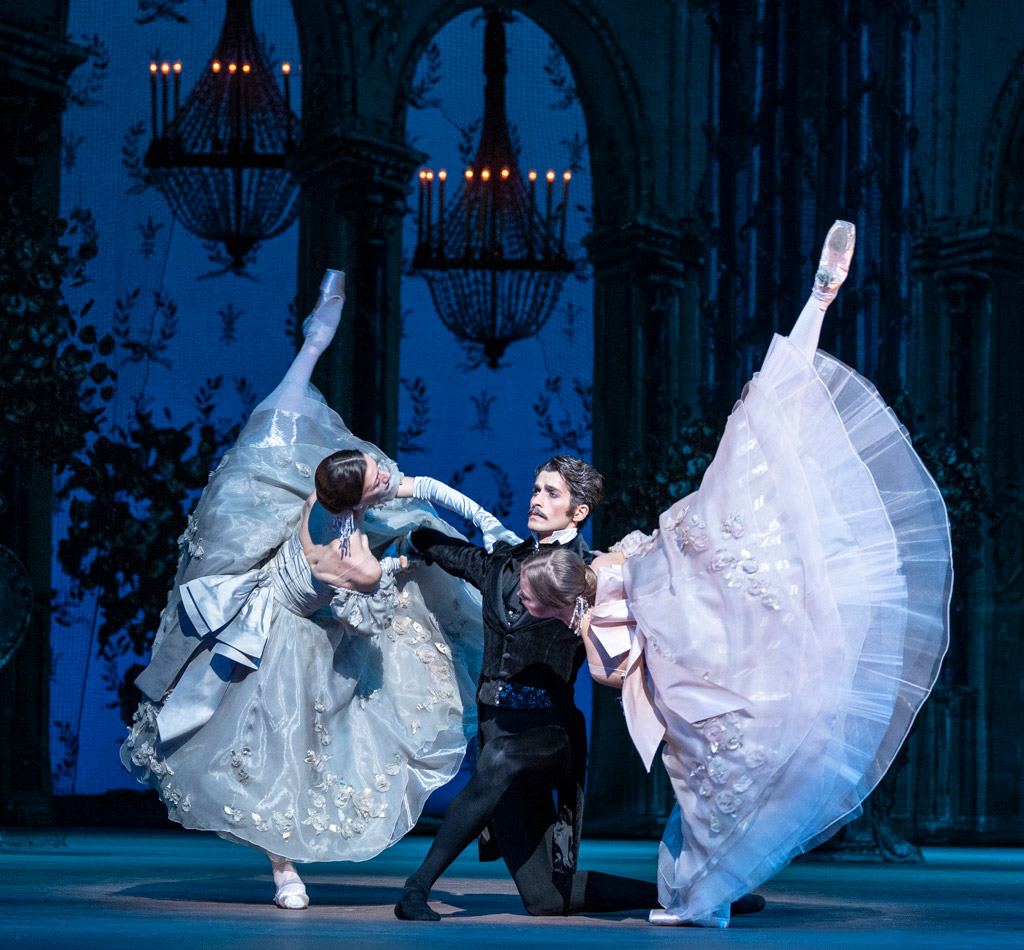
© Foteini Christofilopoulou, courtesy the Royal Opera House. (Click image for larger version)
Until the duel scene, Cranko has portrayed the country party in conventional ballet terms. His choreography for the ensembles – the Larina family’s friends and relations – comes close to musical comedy routines. Everybody dances the same steps, ending in a tableau soliciting applause. (An exception is the delightful criss-crossing of the stage in Act I by sunny youngsters, who then vanish into the wings.) As in his Romeo and Juliet that preceded Kenneth MacMillan’s, Cranko’s stagecraft belongs to an earlier era than his acrobatic, emotionally revealing pas de deux.
The duel scene breaks several conventions. The two sisters, shrouded by shawls, move non-balletically. Lensky dances a poetic, part expressionist solo as he arches to the ground in between yearning arabesques. Matthew Ball does it very well, without drawing attention to his classical line, as some Lenskys do. Onegin stalks past, determined to uphold his honour. But then he shoots Lensky without the presence of seconds. Why didn’t Cranko insist on the appearance of two shadowy figures, however briefly? The motto on Onegin’s heraldic device, repeatedly shown on the front cloth, emphasises his adherence to honour. The duel is meant to be a formal affair, not a shoot-out at dawn.
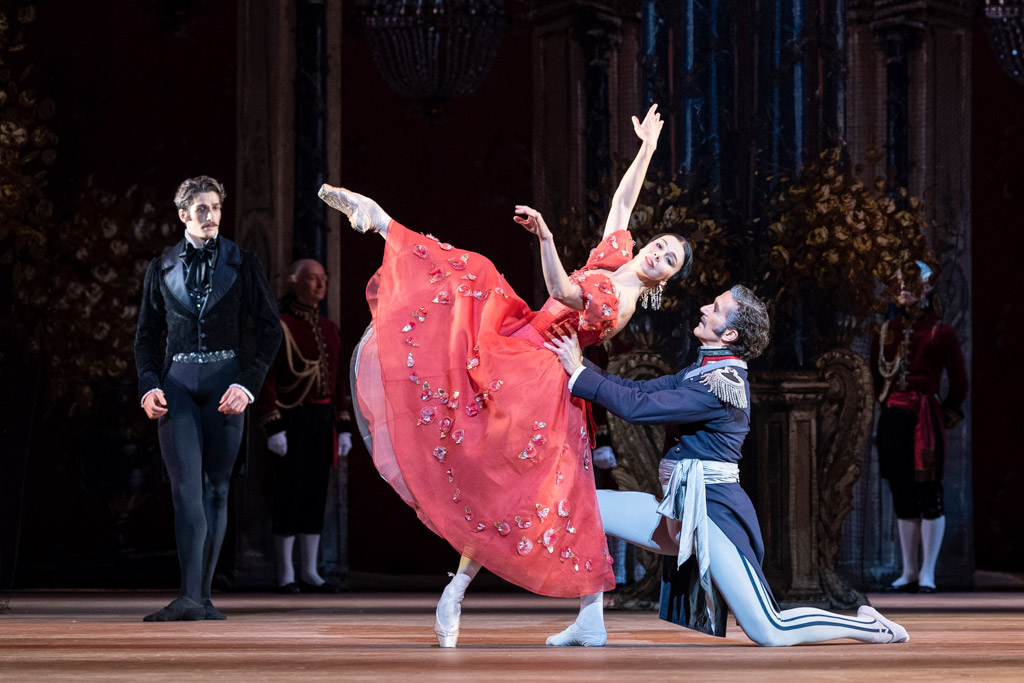
© Foteini Christofilopoulou, courtesy the Royal Opera House. (Click image for larger version)
Clarke crumples convincingly as Osipova’s Tatiana confronts him as a murderer. When he reappears in Act III, Onegin is a broken man, an exile who lurks at a ball held in Prince Gremin’s palace. Cranko contrasts the etiquette of the ball with the informality of the Act II party in the countryside, and adds a dreamlike sequence to give prominence to Onegin. Gary Avis’s Prince is an elder statesman, fondly married to Tatiana, whom he met at that party. Osipova is now a mature woman, grateful to her husband and disturbed by Onegin’s attention. She’s a beauty, no longer a gauche girl.

© Foteini Christofilopoulou, courtesy the Royal Opera House. (Click image for larger version)
When Onegin importunes Tatiana in an echo of her adolescent fantasy duet with him, Clarke seems irresistible. He is exactly what she wanted then, even more handsome and reliable as a partner. So why does she bring herself to turn him away? In Osipova’s case, not for revenge but out of honour – her own and that of her husband (and unseen children). It’s a shattering pas de deux as she goes through a range of emotions, remembering her earlier self. Although the final pas de deux is all about Tatiana, Clarke conveys Onegin’s anguish and moment of triumph when he thinks he has won her over. He’s made the role his own in a formidable debut performance. With more casts to come, Cranko’s Onegin has regained its place in the Royal Ballet’s repertoire.














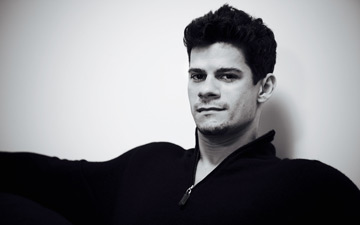
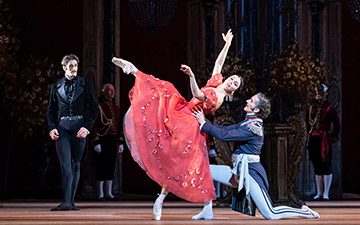
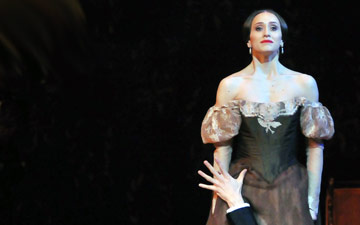
You must be logged in to post a comment.